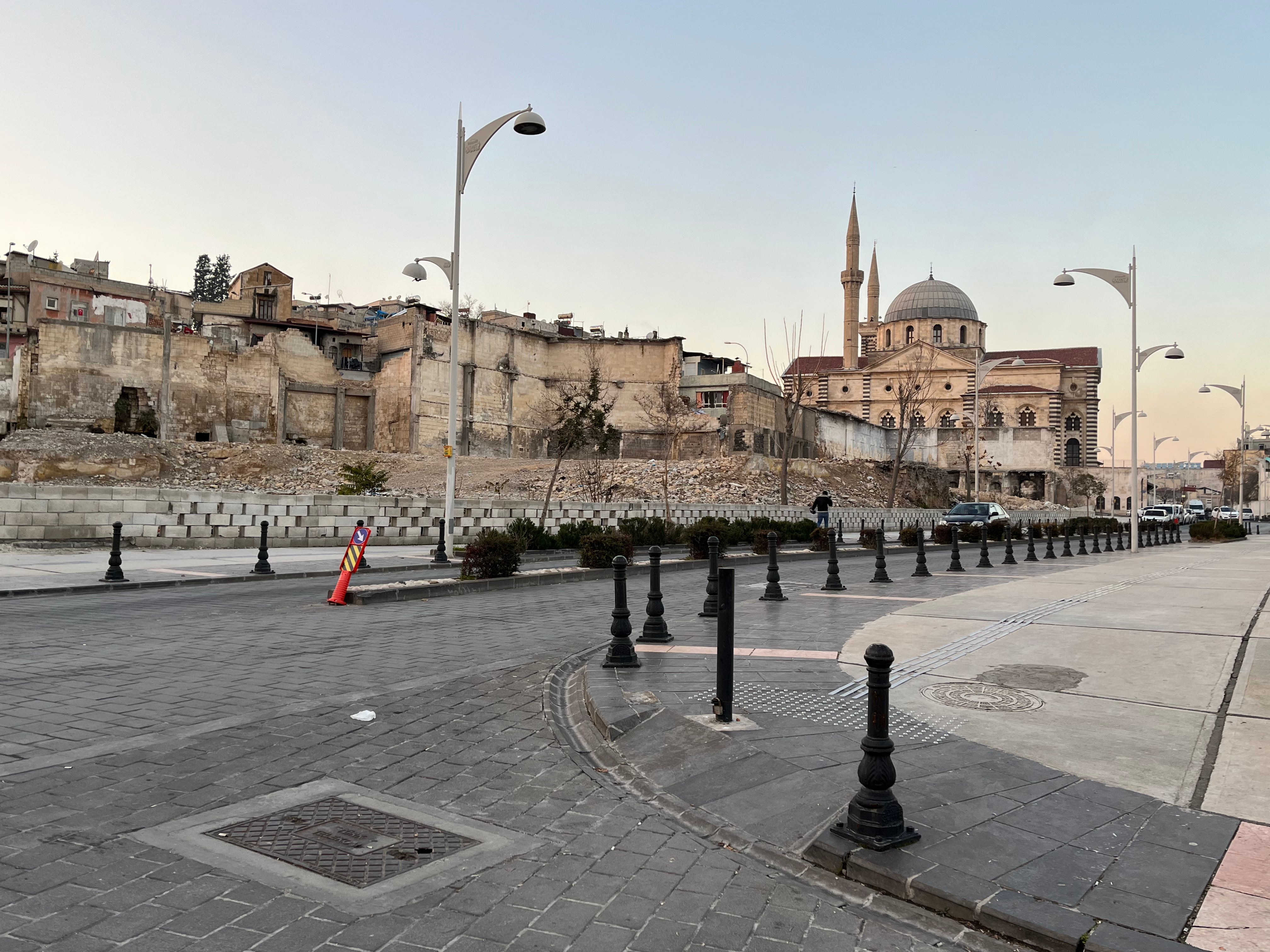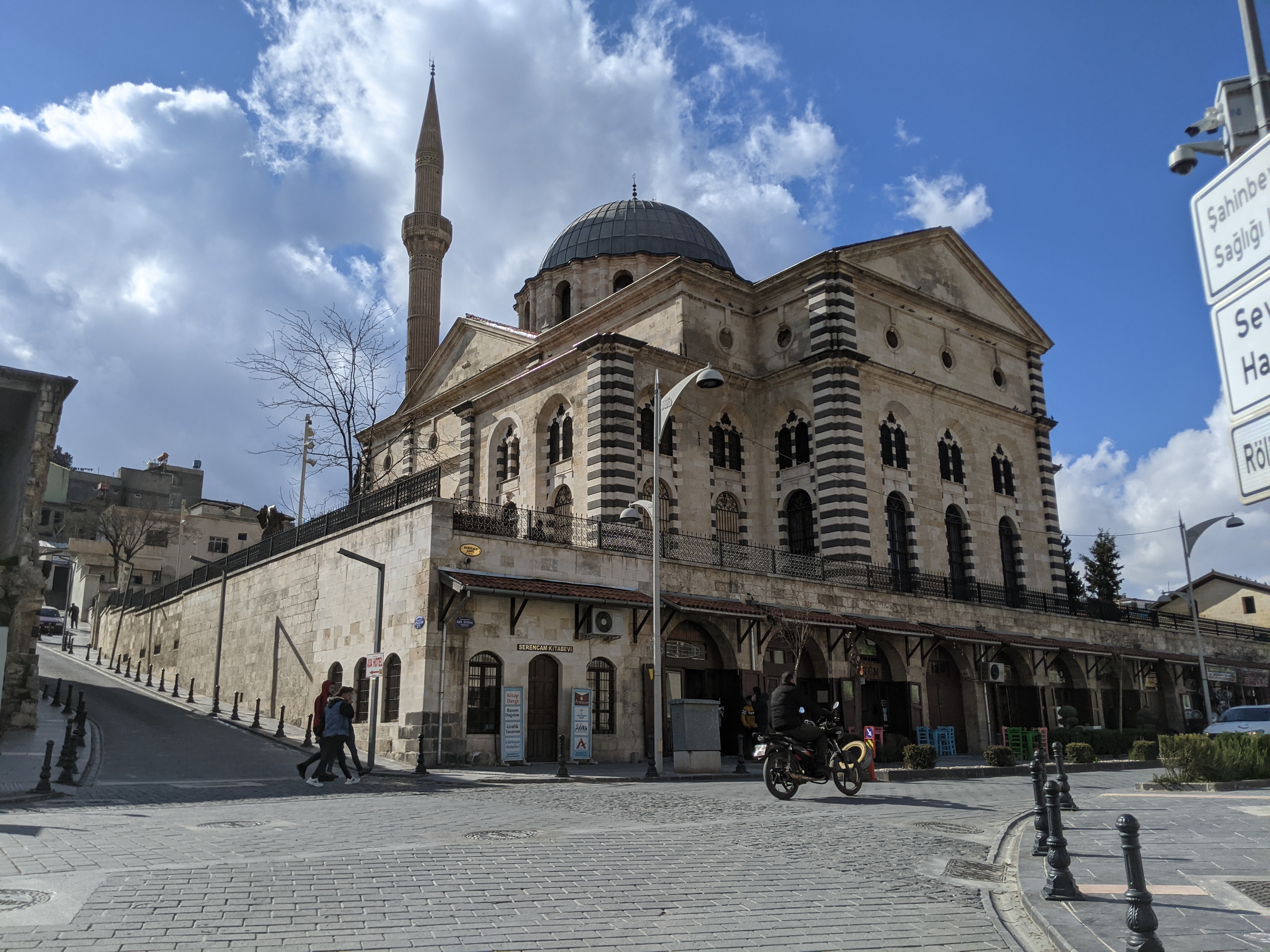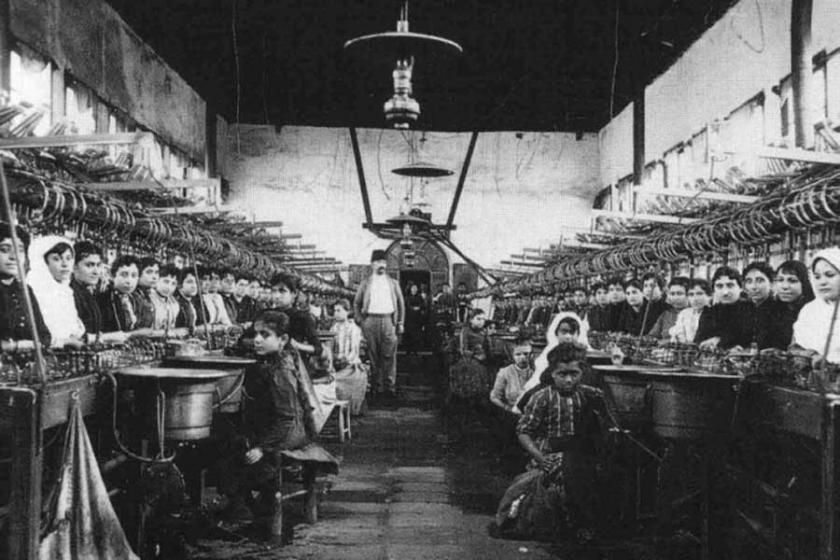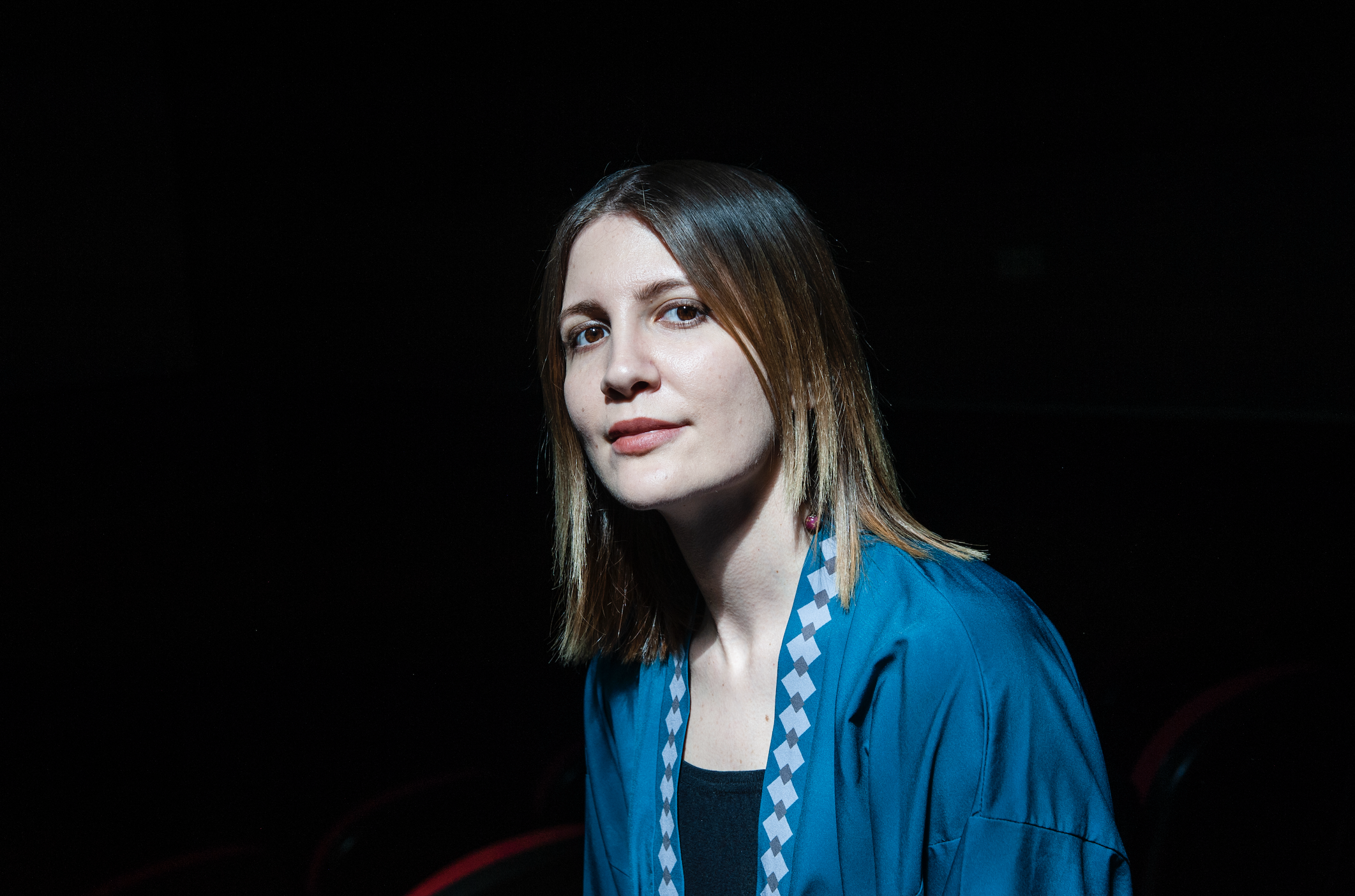Tamar Gürciyan successfully defended her thesis entitled "An Investigation to the Adaptive Reuse of Late Ottoman Armenian church in Aintab, Surp Asdvadzadzin church/Liberty Mosque" at the Technical University of Berlin. With this thesis, Gürciyan carried out a comprehensive study on the transformation of the Surp Asdvadzadzin Church in Antep. Parrhesia Collective had an interview with Tamar Gürciyan about her thesis.
We congratulate you. How did you decide to work on the Church of Antep?
My first encounter with Antep and the Church was during a project trip in the first year of my undergraduate education at ITU Taşkışla. During the trip, we were given a list of places to see in Antep. On that trip, we were expected to visit sites on the list and explore the city by ourselves. As we were walking around, I had my uncle's words in my ear: "Make sure you see the Armenian neighborhood".
I remember İpek Yürekli, one of my favorite lecturers, coming to me during the trip and saying a few things like there had been Armenians living here once. Except for that, unfortunately I didn't hear and couldn't learn anything spoken in terms of Armenian history on that trip. On the last day of the trip, I wanted to see the Kurtuluş Mosque, which was on the list. Some shopkeepers who were helping me with directions, told me that it had once been a prison. They called the building a prison, not a mosque. Not knowing what to expect, I walked towards the building. As soon as I saw this monumental structure, I realized that it was once an Armenian church. I wanted to go inside, but they wouldn't let me enter the building, which was only open during prayer times. I was told to wait for prayer time. At prayer time, I was expected to go to the women's cloister, which was once the baptistry room, and pray. At that moment, I stood in the empty courtyard of the building accompanied by the sound of the prayer...
Then I started walking around the old Armenian neighborhood around the building. No one needed to tell me anything. I had found the neighborhood where Armenians once lived with a bitter feeling under the roof of Surp Asdvadzadzin.
Years later, when I was pursuing my master's degree at the Technical University of Berlin, I wanted to work on historical buildings with the support of Prof. Hermann Schlimme, whose lectures influenced me. Until then, I have been focusing on the future. Hermann Schlimme's methods of bringing the history of architecture to the present day and exploring the spatial experiences and stories of different actors opened the door for me. In the meantime, during one of my summer visits in Istanbul, Ani Paylan showed me the work of the Hrant Dink Foundation. I thought, if I am studying typology, why don't I study the buildings in Anatolia?
The first building that came to my mind was S. Asdvadzadzin in Antep because of its architecture,grandiosity and history. The first question that popped up in my mind was why I could only enter this building during prayer time, while entering other mosques during the whole day was possible. I can say that the experience of feeling offended and broken motivated me to choose and study this building.
 There are four main parts in your thesis: the historical background of the decision to build the Antep Surp Asdvadzadzin Church, the construction of the cathedral and its use until 1922, the long period when the church was used as a prison, and finally the period when it was used as a mosque. How would you summarize each chapter for those who have not had the chance to read your thesis?
There are four main parts in your thesis: the historical background of the decision to build the Antep Surp Asdvadzadzin Church, the construction of the cathedral and its use until 1922, the long period when the church was used as a prison, and finally the period when it was used as a mosque. How would you summarize each chapter for those who have not had the chance to read your thesis?
In my thesis, I question the adaptive reuse of the S. Asdvadzazin hurch, today known as Kurtuluş Mosque or the prison. I ask what the act of transforming the building means when two cultures intersect in a historical space. In doing so, I examine the story of the building's transformation in pursuit of some questions such as how the territorial context influenced the appropriation of the building by different groups, how the church was reused and integrated into daily life after losing its original function, and what the transformation of the building meant for people.
The most important thing that shed light on the first part of my thesis was the correspondence between the Armenian administration of Antep and the Patriarchate in Istanbul. Thanks to the manuscripts now available in the Nubar Library in Paris, I was able to find important information about the pre-construction period of the new church. These manuscripts showed that the Tanzimat period was not an easy time for the Armenian people of Antep and its environs. Before the S. Asdvadzadzin church was built, there was a church with 5 apses and a dome. At the time, the church administration was facing financial and administrative problems. We also see in a manuscript from 1865 the problems of the old church before S. Asdvadzadzin was built. For example, a person who is known to be a Muslim came and forced a wall to be built on the busy street next to the church using the church's budget and confiscated the houses of the Armenians living in the neighborhood. Another document sheds light on the construction of another church in Kilis and the problems of its administration. These manuscripts clearly show that the Armenian administration in this region was going through a difficult administrative process at the time and that it was very difficult to build a large cathedral in this geographical area. We can read the construction of a large cathedral as an attempt by Armenians to show their existence and unity and to protect themselves in the face of these difficult administrative conditions. These historical conditions are also reflected in the typology of the church. In order to continue the construction of the church, the church first had 15 shops built underneath it. After about 20 years of church construction, the building was opened for use before the interior decoration was completed. Likewise, it is possible to say that the gallery of this Armenian church, which owns the first three-storey gallery, is not fully completed. Although the plan of this building resembles the church buildings in Istanbul, it has a special typology due to the conditions of the period, both with the shops underneath and the incomplete interior.
I then examine the period from the Hamidian massacres in the 1890s to the British and French occupation in 1915, 1919 and the departure of Armenians from Antep. During this long period, the S. Asdvadzadzin church went through different uses. In addition to being a place for the administrative, educational and religious activities of the community, it was also used as a food supply and shelter for the poor during the war. In addition, in 1916 it was used as a warehouse where Armenian property was sold as part of the Emval-i Metruke, and later as a barn for a period. After the return of the surviving Armenians to the city in 1919, it was reused by Armenians, albeit briefly, until the Treaty of Ankara in 1922.
 When the Armenians left Antep in 1922, the relationship between time and space also experienced a rupture. Two different realities and the historical reading of these realities cause these buildings to be perceived and experienced in different ways today. On the one hand, the reality of the Antep of a different temporality with the departure of the Armenians, and on the other hand, the reality of Antep that physically changes and transforms in a temporality where a new daily life begins and progresses in Antep with the departure of the Armenians. These two temporalities can give rise to pluralistic perspectives and perceptions towards the building. For example, the experiences of the guards and prisoners during the period when the building was used as a prison are different from each other, and the way they perceive and experience the space is also different. In the interviews with the guards, the stones and massiveness of the building and the narrative that the building was once a church with these structural elements come to the forefront, while in the narratives of political prisoners, we see that their own stories are shaped by the harsh physical conditions and damaged parts of the building.
When the Armenians left Antep in 1922, the relationship between time and space also experienced a rupture. Two different realities and the historical reading of these realities cause these buildings to be perceived and experienced in different ways today. On the one hand, the reality of the Antep of a different temporality with the departure of the Armenians, and on the other hand, the reality of Antep that physically changes and transforms in a temporality where a new daily life begins and progresses in Antep with the departure of the Armenians. These two temporalities can give rise to pluralistic perspectives and perceptions towards the building. For example, the experiences of the guards and prisoners during the period when the building was used as a prison are different from each other, and the way they perceive and experience the space is also different. In the interviews with the guards, the stones and massiveness of the building and the narrative that the building was once a church with these structural elements come to the forefront, while in the narratives of political prisoners, we see that their own stories are shaped by the harsh physical conditions and damaged parts of the building.
While the experiences of the people who experience the building are unique, the experiences of Armenians in the diaspora and those living in Turkey today, along with the stories of the prisoners and guards, constitute the political identity and narrative of the building. In fact, the territorial tension that existed before the construction of the church continues to produce itself in different ways today. This tension continues to exist in this space that different actors experience simultaneously in different temporalities, even if the building is used for different functions. At this point, the transformation and reuse of the building becomes political. S. Asdvadzadzin continues to survive as wounded and imaginary spaces in a vicious circle that constantly ravages itself and rewrites new narratives as it ravages.
In order to complete your thesis, you also visited Antep before the earthquake and made recordings for oral history. Which of the testimonies you listened to was the most striking?
During my oral history studies, I experienced two moments that held me back. The first was when I heard an Armenian from Beirut say in an interview that no building should be transformed and reused, as it is a sign of disrespect. Hearing this at a time when adaptive reuse in architecture is widely discussed and debated shook me and caused me to think about it for a while. The second time was when one of the guards told me that they put chains around the prisoners' necks and took them to the cave. Later, I learned from the prisoners I listened to that the building behind the church, which Armenians call the old church, was the area where they kept the leftist prisoners stayed on the south side and the rightist prisoners on the north side. They told me that they were tortured in the cave in the old church behind the leftist ward. Unfortunately, the building behind it was demolished and rebuilt just before the building survey was carried out in 2012. With the demolition of that building, another crime against humanity was left under the ruins.
Many historical architectural structures in the region were damaged in the earthquake. What impact did this have on the Antep Church and how did it influence the course of the thesis?
The minarets and the dome of the building collapsed in the earthquake. Other than that, it was not damaged as far as I know. I visited Antep a month before the earthquake and conducted oral history studies. Unfortunately, I could not conduct a study about the situation after the earthquake due to time constraints. Yet, I could not work on my thesis for a long time due to the effect of the earthquake. Natural disasters once again reminded me of the transience of these structures, the value of human life and the existence of solidarity despite differences. I hope that this study will contribute to the future reuse of the S. Asdvadzadzin building in a way that embraces everyone.
The methodology you use in your thesis is very comprehensive and interdisciplinary. This helps us to understand your thesis topic in a deeper way. Would you like to talk a little bit about your methodology?
In the thesis, I used both the theoretical and practical possibilities offered by history and architecture together. I emphasized the importance of including the views and experiences of different groups. For this reason, the oral history I conducted with Armenians, guards and prisoners has an important place in my thesis. My aim was to reveal the story and set-up of the building by bringing the voices and experiences that had no voice in history, that could not be heard, that were left in the dark, through the history of the building to the present . Of course, this covers a long period from a few years before the construction of the building until today. While the work I did with oral history reveals the stories of users from the 1960s to the present day, the Patriarchate Archive in the Nubar Library gives voice to the pre-construction period of the building. In that archive, we get to hear the stories of that period.
In addition, I tried to map the changes that the building experienced in different periods accompanied by spatial elements by processing how the Atenagan, Hayganushyan, Vartanyan schools and the area around the S. Asdvadzadzin church changed over time in the background of the stories. In addition to these, together with literature studies, I have presented both a temporal and polyphonic account of architectural history.
Marxist historian Harry Harootunian's concept the non-contemporeranity of the contemporaries finds a large place in your thesis. How did this approach contribute to your explanation of the transformation of the church while analyzing the Surp Asdvadzadzin Church of Antep?
I was first introduced to Harry Harooutunian's concept through the Parrhesia Collective. It has been a very influential concept in the course of my thesis. With his concept of the non-contemporeranity of the contemporaries, Harooutunian argues that the existence of ambiguities such as modern and archaic, new and old, contemporary and nativist, which are intertwined in the present day, reappears like a ghost with sudden temporal deviations. This means that we do not live in a single temporality, even though the ever-forward rhythm of daily life resynchronizes differences and makes them appear as one. As such, time is reflected in our experience of space and influences the form of this experience in us. Especially historical places are the source of different realities and different times. When the Armenians left Antep, the S. Asdvadzadzin Church's link between time and space, which was synchronized with daily life, was severed. This concept includes not only the fracture of the temporality of the Armenians, but also the experiences narrating other fractures and ramifications that emerged with this break. In my thesis, this concept not only helped me to explain the perspective of the Armenians who visited the building, but it was also through this concept that I was led to the darkened prison period of the building. It shed light on re-discovering the different periods of the building together with the experiences of individuals.
There is a section in your thesis where you read Walter Benjamin's Reflections in parallel to the memoirs of Haig, an Armenian from Antep, from the magazine "Nor Aintab" published by American Armenians from Antep. Can you share with us your findings about remembering architectural works/spaces that are about to be forgotten in Antep?
In his “Berlin Chronicles” found in Reflections, Walter Benjamin narrates his childhood memories through spatial arrangement. The arrangement of Benjamin's memories is not based on a chronological order, it is spatial. The subject reconstructs his memories through the spaces and forms his imaginary space. I read a similar experience in an essay by Haig, an Armenian born in Antep, who writes about his visit to Antep years later. In this essay, Haig wanders aimlessly through the streets. When he sees a familiar place, he remembers his uncle, the neighborhood baker, just as Benjamin sees the faces of his acquaintances disappearing in the windows. Haig's "going home" and "visiting home" happen at the same time.
It should be noted here that Haig visits the Antep of his childhood with his memories and has a spatial experience by remembering the Antep of his childhood. A similar effort of spatial construction is also valid for Armenians born in the diaspora today, who have learned about Antep through the stories of their ancestors. For them, the difference from Haig may be to visit a place which they have never physically experienced and do not actually know, to learn about the places of their ancestors, and sometimes to enact and reconstruct a parallel time and place that they know will never exist, with questions such as "what would our life have been like if we had stayed there" or "what was my grandfather's life like?". The physical space is actually a physical stage for this imaginary setup. In this context, the features of the space belonging to the church period come to the fore. In particular, symbolizing elements such as the longitudinal axis of the space ending with the apse, the broken cross bars on the windows, and the scale of the church take place in the setup of the space. Symbols come to the forefront in the Armenian experience of space as they contain a categorized knowledge beyond their borders, namely the knowledge of being a church.
Apart from this, architectural elements such as large doors, door locks or local stones, which are often repeated in the city of Antep, can also come together again in the S. Asdvadzadzin experience. Through this, we can see the effort of Armenians to fill the void that they do not know about the lives of their grandparents and will never be able to fill, and the spatial binding of this effort while experiencing the space. During this effort, like a collage, the spatial elements that carry the information of that period come together in pieces. Through the extension and coming together of these elements, the individual constructs his/her own imaginary space and creates for himself/herself a space of experience and imagination that goes beyond the boundaries of physical space.
The Armenian experience of the S. Asdvadzadzin cathedral resembles the experience of a ruin in this respect. One of the important characteristics of ruins in the landscape is fragmentation, and ruins encode an incomplete knowledge of its existence beneath its material. The current use of the building and the related interventions to the building and its surroundings create fragmentation in the perception of the building. This is not only related to the solid physical condition of the building. The S. Asdvadzadzin church, like a ruin, with the disappearance of the complex of buildings around it, represents not only existence, but also unknown knowledge and the void that needs to be completed, but remains incomplete.
Thank you very much for sharing with us the content of your thesis in a very untouched area through this interesting interview. We hope that your thesis will be published soon. We wish you success in your future endeavors.






